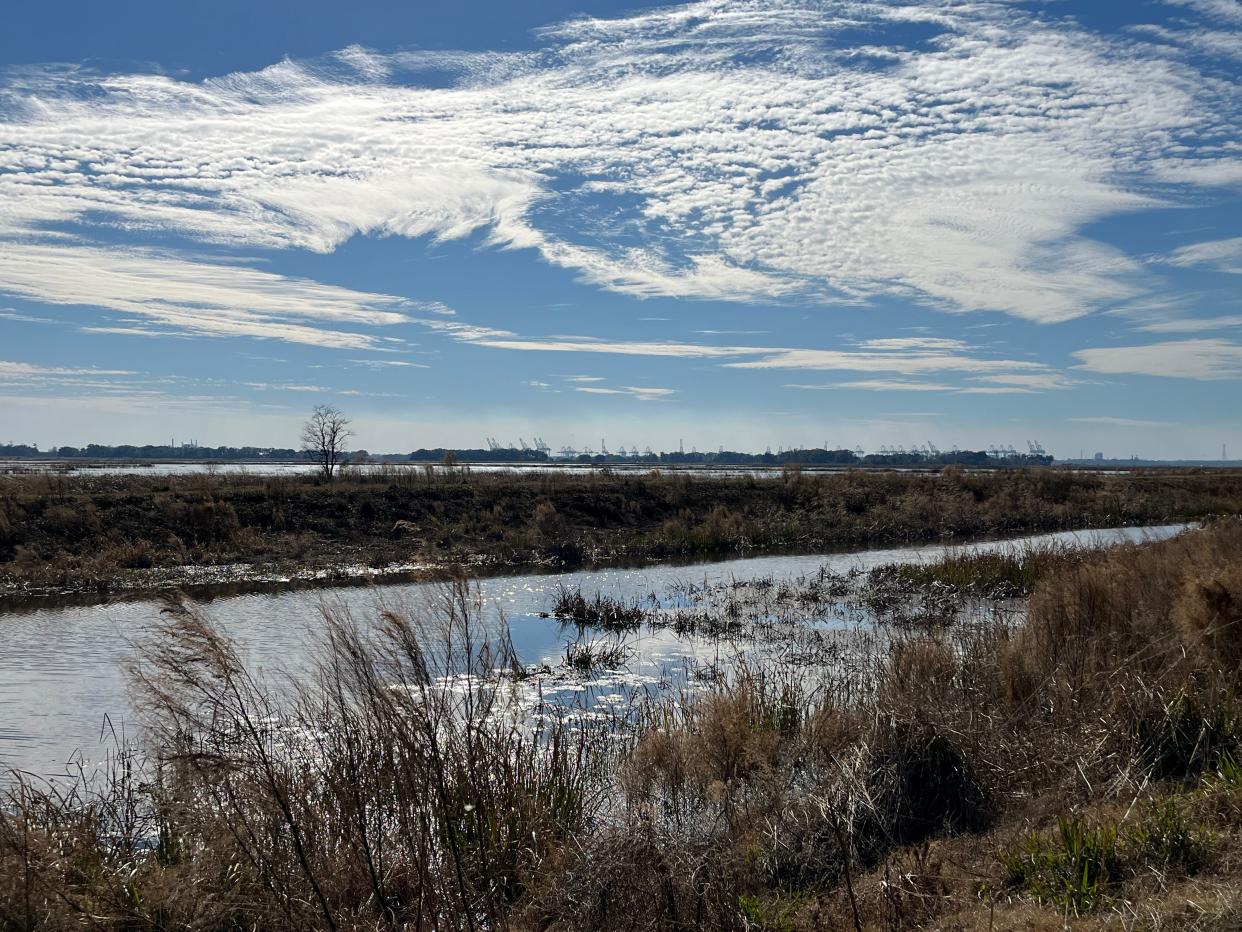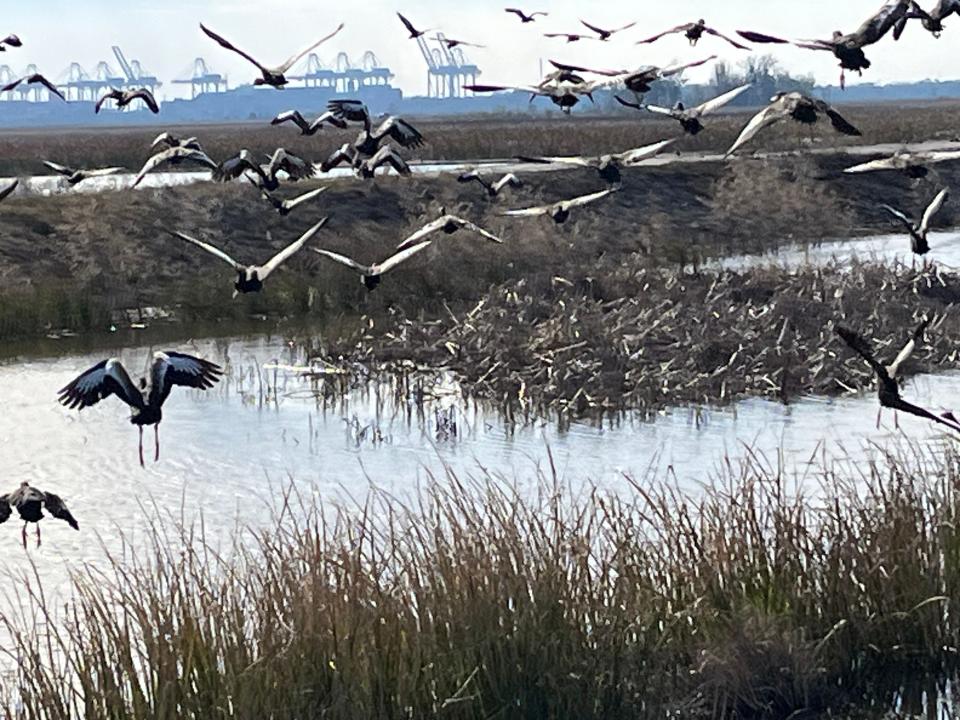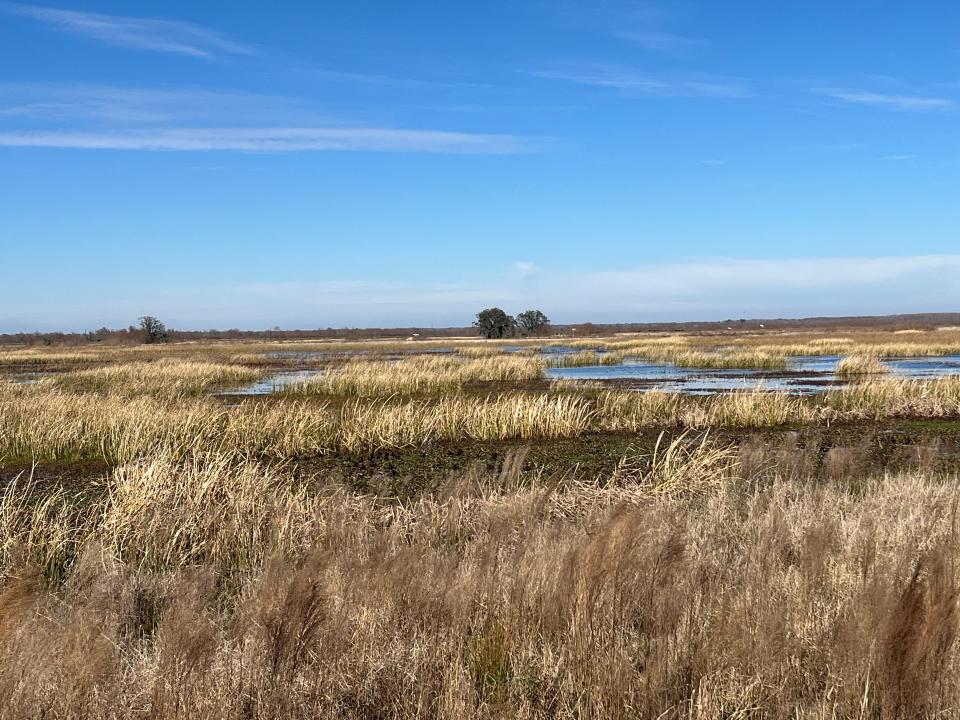Savannah National Wildlife Refuge goes with flow to combat climate change

HARDEEVILLE, S.C.―When the remnants of Hurricane Irma moved north across the Georgia-South Carolina border in 2017, nature revealed the fragile line separating coastal habitats.
At the nearly 32,000-acre Savannah National Wildlife Refuge, Irma’s storm surge sent torrents of saltwater over levees and into expanses of carefully protected freshwater wetlands.
Irma, by then a tropical storm, left an estimated $18 million in damage at the refuge.
The system of canals and earthen barriers meant to keep saltwater out and freshwater in was severely compromised. As a result, the refuge was unable to effectively control water flow in 70% of its 3,000-acre impoundment area, leading to a widespread loss of freshwater vegetation that serves as valuable habitat for migratory birds and other species.
More than six years later, those areas have not only been restored, but improvements have buttressed the refuge against sea-level rise and extreme weather tied to climate change, as well as saltwater intrusion fueled by expansion of the nearby Port of Savannah.

The project “put the (freshwater area) back almost better than it was,” U.S. Fish and Wildlife Service Deputy Director Siva Sundaresen said during a recent event commemorating completion of the work as waves of black-bellied whistling ducks ― a prized inhabitant of the refuge ― meandered over the marsh. “And that’s something we all have to recognize that we have to do. ... We have to build resilience into these landscapes, and we have to build resilience into our management of them.”
The U.S. Fish and Wildlife Service partnered on the project with the non-profit Ducks Unlimited, which provided design and survey services for the $80 million project, as well as oversight of contractors, many of whom were local.
“We are kindred spirits from the same family tree,” Ducks Unlimited Chief Operating Officer Nick Wiley said in describing his organization’s relationship with the Fish and Wildlife Service. “We have this mutual understanding of the science that supports and backs up what we do on the landscape to take care of these important species and waterfowl, and that drives us together to do the work we do.”
More: Change to rule that buffers coastal marshes draws concern of advocacy groups
‘Just going to make Mother Nature mad’
In an interview before the event, Chuck Hayes, supervisory wildlife biologist with the U.S. Fish and Wildlife Service, recalled what he and colleagues discovered when they returned to the nearly century-old refuge after Irma has passed.
“We had some pretty significant breaches, which allowed the water to flow over the perimeter levees and into the interior (freshwater) pools, flooding them with saltwater, which ended up killing all the vegetation,” he said. “The other problem is that we could no longer control the tidal flow in and out of the pools.”
The coming and going of tidal waters continued to widen the breaches, which only exacerbated the problem.
“So, we decided that really the best thing to do was to rebuild the whole thing,” Hayes added.
But Hayes and others involved in the project realized that simply restoring the impound area wasn’t enough. If the refuge’s impound area was overrun by saltwater once, it very well could happen again.
Fueled by climate change, flood-level tides at the nearby Fort Pulaski weather station are becoming more common, storm surges are extending further inland and the threat of extreme weather is growing.
That combination makes armoring the refuge futile, if not counterproductive, Hayes noted.
“If you try to beat Mother Nature over the head, you’re going to lose every time,” he added. “So building a higher, stronger dike is just going to make Mother Nature mad, and she’s just going to blow it out.”
Instead, the new design will allow saltwater to enter and exit the impound area.
“If we get a big storm surge, the water's just going to flow over the top and flow back, and that'll minimize the damage.” Hayes said.
Along with the design changes, the refuge has modernized management procedures to make it increasingly climate friendly. That includes mowing the berms less frequently, especially when vegetation is blooming.
“It brings wildlife closer (for visitors), benefits pollinators, cuts down on our fuel use and carbon footprint, and we can redirect our maintenance staff to higher-priority projects,” Hayes concluded. “So it’s just been beneficial all around.”
More: Savannah has gotten 2 degrees warmer this century; thank climate change

Savannah National Wildlife Refuge by the numbers
Total area: 31,800 acres
Managed freshwater area
3,000 acres
16 pools or impoundments
31 miles of levies
Waterfowl
22 species
Up to 20,000 wintering birds
Visitors
More than 250,000 a year
John Deem covers climate change and the environment in coastal Georgia. He can be reached at jdeem@gannett.com
This article originally appeared on Savannah Morning News: Project protects Savannah National Wildlife Refuge from climate change

